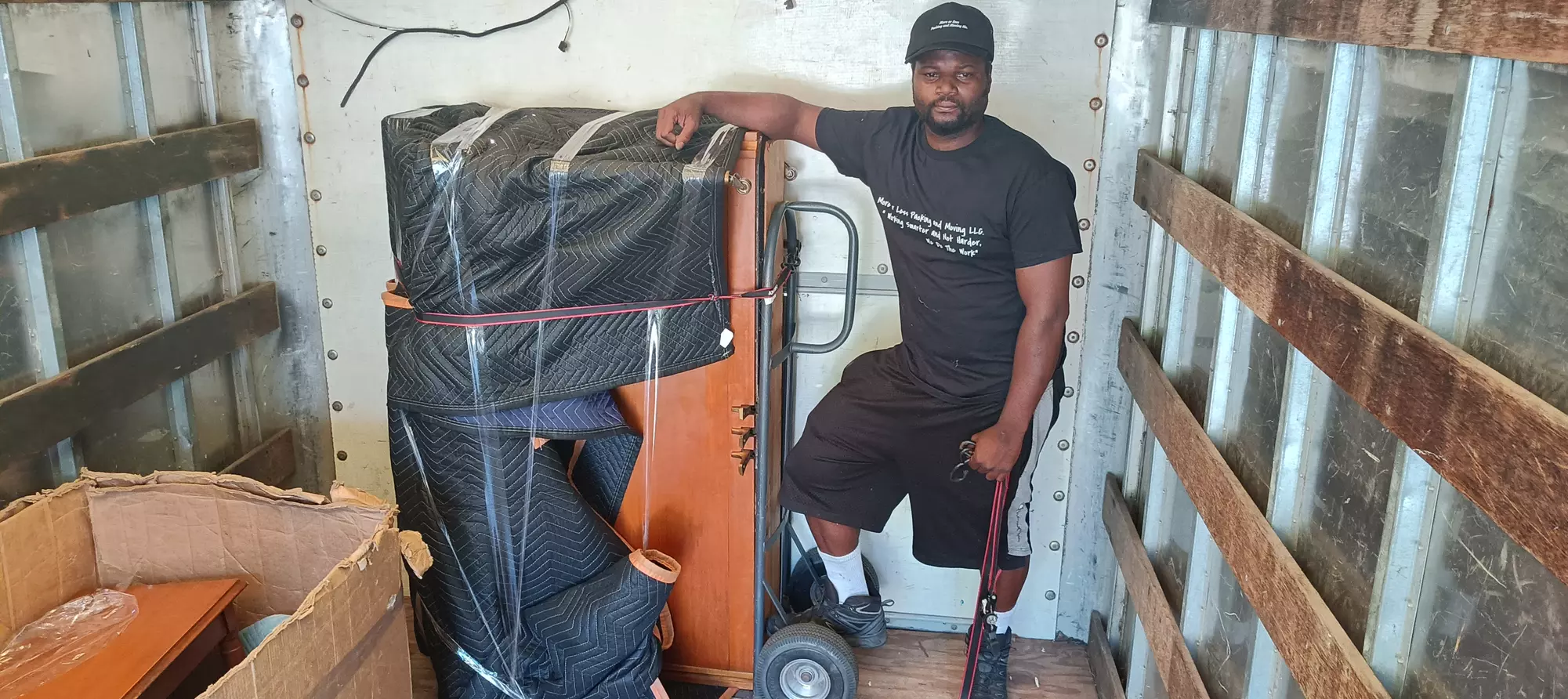Comprehending the Inclusions of moving and Freight Forwarding in the World of International and residential Delivery
Guiding with the complexities of moving and Freight forwarding can be difficult. Both procedures involve unique treatments and requirements that are essential for effective transportation. Comprehending the distinctions in logistics, documentation, and risk management is crucial for organizations and people alike. This understanding can greatly impact the effectiveness and safety and security of shipments. Nonetheless, numerous are uninformed of the details parts that influence the overall experience and results. What factors should one think about to assure a smooth transition?
The Essentials of moving and Freight Forwarding
moving and Freight forwarding are basic parts of the international logistics market. They promote the transfer of items and individual items throughout international and domestic borders. moving mainly includes the relocation of family members or people, incorporating business and property requirements. It commonly includes packaging, packing, delivering, and unloading products at the destination. On the other hand, Freight forwarding is concentrated on the delivery of goods, commonly in bulk, making use of different transportation settings, such as land.freight, sea, or air forwarders act as intermediaries, collaborating logistics to guarantee timely delivery while maneuvering with complicated laws and customs treatments. Both processes call for cautious preparation, company, and communication to assure effectiveness and decrease disruptions. Comprehending these fundamentals is essential for any individual included in logistics, as they lay the foundation for advanced facets of shipping and transport administration.
Trick Elements of Freight Forwarding Services
Freight forwarding services incorporate several crucial elements that guarantee smooth transport of goods. Secret responsibilities of Freight forwarders consist of managing logistics, coordinating shipments, and taking care of customizeds clearance. Additionally, recognizing necessary shipping documents is imperative for conformity and efficient activity of freight.
Freight Forwarder Responsibilities
A reliable Freight forwarder plays a vital function in working with the transport of items, guaranteeing that shipments are dealt with efficiently and in compliance with regulations. Their responsibilities encompass various crucial tasks, including picking suitable transport courses, working out Freight prices, and handling logistics. They function as middlemans in between carriers and service providers, ensuring that freight is properly packaged and identified for risk-free transportation. In addition, Freight forwarders track deliveries, giving updates to customers concerning the standing and anticipated delivery times. They additionally assess and handle threats connected with transport, recommending insurance policy alternatives as needed. By facilitating communication and paperwork, Freight forwarders streamline the shipping procedure, reducing possible hold-ups and improving general supply chain performance.
Shipping Documents Basics

Recognizing Personalizeds Clearance and Documents
Accurate documents is vital in the customs clearance process, as it ensures compliance with various regulations. A summary of customs regulations highlights the intricacies encountered by shippers and Freight forwarders. Typical clearance difficulties can significantly affect shipment timelines and costs, making understanding this facet necessary for effective logistics.
Value of Accurate Documents
Steering through the complexities of global delivery needs a keen understanding of custom-mades clearance and the crucial role of documents. Exact paperwork is necessary for ensuring that shipments follow regulations and reach their destinations without hold-ups. Correctly prepared files, consisting of costs of lading, industrial invoices, and packing lists, help with smooth interactions with personalizeds authorities. Mistakes can result in delivery hold-ups, penalties, and even confiscation of goods. Thorough documentation help in tracking deliveries and dealing with conflicts. As a result, organizations involved in moving and Freight forwarding need to prioritize careful documentation methods to navigate the complex landscape of worldwide shipping successfully. This diligence not only improves procedures yet likewise boosts customer complete satisfaction by making sure timely shipment.
Personalizeds Regulations Summary
Guiding customizeds policies is a vital aspect of international trade that straight affects the success of moving and Freight forwarding operations. Effective personalizeds clearance needs an understanding of various policies, consisting of tolls, responsibilities, and import/export constraints. Accurate paperwork is necessary, as it assures compliance with lawful demands and assists in the reliable activity of items throughout boundaries. Trick documents typically include business invoices, packing lists, and expenses of lading, which provide thorough info about the delivery. Furthermore, custom-mades brokers play a crucial duty in steering intricate policies, working as middlemans between personalizeds and shippers authorities. By preserving complete knowledge of custom-mades processes, services can substantially minimize delays and reduce costs related to international shipping.
Usual Clearance Obstacles
Numerous difficulties can develop throughout the personalizeds clearance process, often making complex the motion of products throughout borders. One considerable issue is not enough documents, which can bring about hold-ups and charges. Importers and merchants need to guarantee all needed documentation, such as invoices, packing lists, and certificates of origin, is complete and exact. Additionally, disparities in valuation can set off scrutiny from custom-mades authorities, resulting in additional responsibilities or assessments. Language obstacles might additionally position difficulties, as miscommunication can lead to misunderstandings pertaining to guidelines. Additionally, modifications in customs regulations can create confusion, necessitating continuous watchfulness by carriers. Ultimately, getting over these clearance challenges calls for extensive prep work and a clear understanding of customizeds requirements to assist in smooth international transactions.
Product Packaging and Classifying Demands
Although typically neglected, packaging and labeling requirements play a necessary duty in the shipping process, making certain that items are shielded and conveniently identifiable throughout their trip. Appropriate packaging safeguards products from damage throughout transportation, while additionally helping with efficient handling and storage space. Utilizing appropriate materials, such as bubble wrap, foam, or tough boxes, can avoid damage and loss.Labeling is just as critical. Exact and clear labels convey vital details, including the destination, dealing with directions, and contents. Tags must abide by policies particular to international and residential shipping, which may include unsafe products identification or customizeds declarations.Moreover, standardized labeling techniques simplify the monitoring process and boost total logistics performance. By sticking to product packaging and labeling needs, businesses decrease the threat of hold-ups, damages, or misdelivery. Inevitably, these practices contribute considerably to the success of moving and Freight forwarding procedures, making certain a smooth delivery experience for all celebrations included
Tracking Shipments: Value and Methods
Efficient product packaging and labeling set the structure for successful delivery monitoring, however tracking deliveries is equally important in the delivery procedure. Delivery tracking offers real-time exposure, which helps consumers and companies keep an eye on the progress of their products. This openness boosts customer complete satisfaction, because clients can stay informed concerning distribution timelines and any kind of possible delays.Several techniques help with effective tracking. Barcode scanning is an usual technique, using one-of-a-kind identifiers to monitor packages throughout their trip. In addition, GPS modern technology enables exact place monitoring, permitting for prompt updates and boosted logistics management. Many shipping companies now provide digital systems and mobile applications that give customers with very easy accessibility to tracking information.The relevance of delivery tracking can not be overstated; it minimizes the risk of shed or harmed goods, boosts operational efficiency, and fosters count on between recipients and shippers. For that reason, incorporating effective monitoring methods is crucial for effective domestic and global shipping procedures.
Insurance coverage Options for Your Item

Protecting insurance coverage for goods en route is an important consideration for organizations and people alike. Insurance coverage options differ based find local movers upon the kind of delivery, value of items, and certain dangers entailed. Usual types consist of copyright responsibility, which covers loss or damages while in transit, and full-value insurance policy, providing comprehensive protection for the total worth of the goods.Shippers might also take into consideration marine insurance for worldwide shipments, securing versus risks connected with sea transport. It is necessary to examine the certain demands of the shipment and evaluate the conditions of any type of policy.Furthermore, recognizing exemptions and constraints is essential to stay clear of prospective voids in coverage. Shippers must involve with insurance professionals to explore customized remedies that fit their unique situations. Ultimately, spending in the ideal insurance policy can alleviate monetary dangers and provide satisfaction throughout the delivery procedure.
Selecting the Right moving and Freight Forwarding Service
When picking a moving and Freight forwarding service, it is vital for services and people to meticulously assess their details needs and concerns. Aspects such as the quantity of products, location, and timeline play a considerable duty in this decision-making procedure. Researching movers nearby various carriers is advisable; contrasting their services, prices, and customer testimonials can expose valuable insights.Additionally, it is essential to take into consideration the experience and proficiency of the service supplier in handling particular types of freight, particularly for international deliveries that may entail personalizeds clearance. Transparency in rates, including any surprise fees, ought to also be scrutinized.Furthermore, examining the level of consumer assistance supplied is important, as prompt communication can mitigate problems during transportation (international moving). Finally, validating the accessibility of insurance coverage options ensures that goods are shielded throughout the shipping process. By taking these organizations, steps and people can make enlightened choices that straighten over here with their logistics requirements
Often Asked Concerns
What Kinds Of Goods Can Be Shipped Globally?

Just How Do Shipping Costs Range Various Service Providers?
Delivering expenses differ significantly between carriers as a result of aspects such as service rate, freight type, range, and additional solutions provided. Each service provider's rates design reflects these variables, affecting general shipping expenditures for clients.
Can I Ship Hazardous Materials or Perishables?
Shipping hazardous products and perishables is subject to stringent laws. Service providers usually require details packaging, labeling, and documents. Shippers must guarantee conformity with local and global laws to avoid penalties and ensure risk-free transport.
What Should I Do if My Shipment Is Delayed?
When faced with a shipment delay, one should first speak to the copyright for updates. Review any kind of notices got, assess different options, and maintain all parties informed about the scenario to lessen disruptions.
Exist Weight Limits for Delivery Containers?
Weight limitations for delivery containers differ depending upon factors like container dimension and delivery guidelines. Typically, basic containers have a maximum gross weight of around 30,000 to 32,000 kilos to guarantee safe transport and handling. In comparison, Freight forwarding is focused on the shipment of goods, usually in bulk, making use of different transport settings, such as air, sea, or land.Freight forwarders act as middlemans, coordinating logistics to ensure timely shipment while maneuvering via complicated regulations and customizeds procedures. Key duties of Freight forwarders include taking care of logistics, coordinating deliveries, and dealing with customs clearance. A trusted Freight forwarder plays a necessary duty in collaborating the transportation of items, making sure that deliveries are handled efficiently and in compliance with policies. Effective product packaging and labeling set the structure for successful shipment monitoring, yet tracking deliveries is equally crucial in the delivery procedure. Lots of delivery firms currently use digital platforms and mobile applications that give customers with simple access to tracking information.The importance of delivery tracking can not be overemphasized; it reduces the danger of shed or harmed goods, improves functional effectiveness, and promotes count on in between carriers and receivers.
Comments on “Problems that delay your shipping freight timeline”